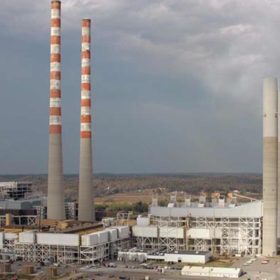Solar systems may already be a cost-effective choice for many American households, even if subsidies like tax credits and rebates become a thing of the past. According to new analysis by the website Cost to Install Solar, installing a home solar system, without any subsidies, is already a promising investment opportunity for homeowners in more than a dozen states.
The federal investment tax credit (ITC), the most widespread solar incentive currently in place, provides a 30 percent tax credit for the installed cost of a residential solar system. After 2019, the credit is scheduled to step down and ultimately go away at the close of 2022. However, with the impending change in administration and talks of tax reform, some question whether the solar tax credits will be around that long.
Based on analysis of hundreds of thousands of solar installation records, Cost to Install Solar found that residential solar is probably here to stay regardless of what happens in the White House. Using installation data compiled by the National Renewable Energy Laboratory, the website calculates the average unsubsidized cost of solar and solar system performance across the United States. Out of the 15 states with enough installation records to perform a full analysis, the site determined that homeowners in 14 states could to pay off their initial solar investment with electric bill savings within the expected lifetime of the system. Only in Oregon, with its low electricity rates and lack of sunny days, was solar found to be a questionable investment.
While Indiana, Texas, Ohio, Pennsylvania, and Utah rank as the least expensive places to install a residential solar system, none of these topped the list as the most cost-effective state for residential solar. That distinction goes to Rhode Island, which has the highest statewide electricity prices in the Northeast. Based on estimated electric bill savings of nearly $2,000 a year, a Rhode Islander could pay off their solar investment in less than 15 years. That’s half the expected lifetime of a typical solar system.
Other states with high electricity prices, like New Hampshire, California, and Connecticut, also have a good solar value proposition. Arizona, which has fairly a low electricity rates but ranks as one of the sunniest states in the nation, also rated among the most cost-effective states for homeowner to invest in solar.
At the city-level, the site found that solar is cost-competitive in more than 90 percent of the 1,725 cities analyzed. The towns of Ione, California near Sacramento and Walpole, New Hampshire along the Vermont border have the best solar investment potential in the country. Residents in these towns can break even with solar savings in less than 11 years.
The site notes that these payback estimates are only meant to be a starting point for households considering a solar investment. They do not account for additional system maintenance or financing expenses or the cost of replacing hardware like an inverter, but they also assume that electricity prices won’t increase over time, which is unlikely. Even taking into account the simplified nature of these calculations, it looks likely that solar is here to stay, no matter what happens to the future availability of incentives.





